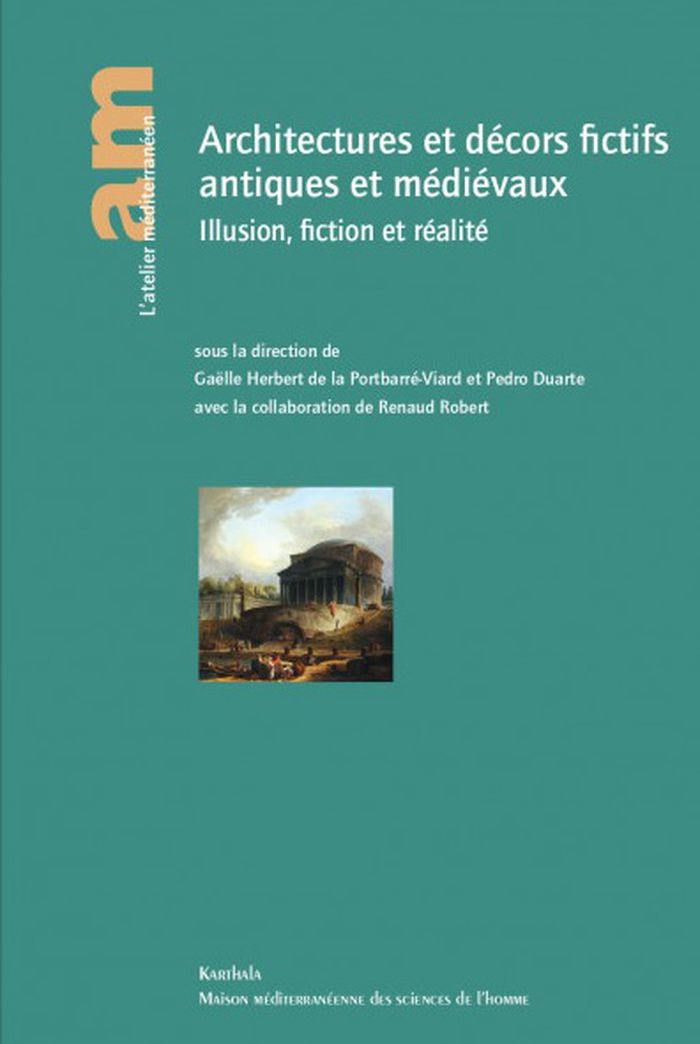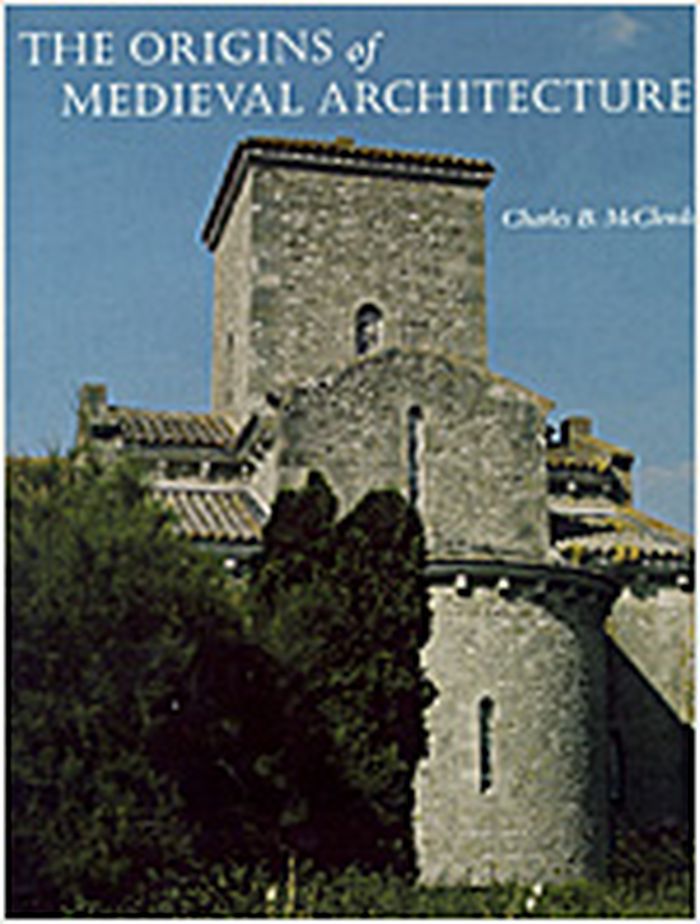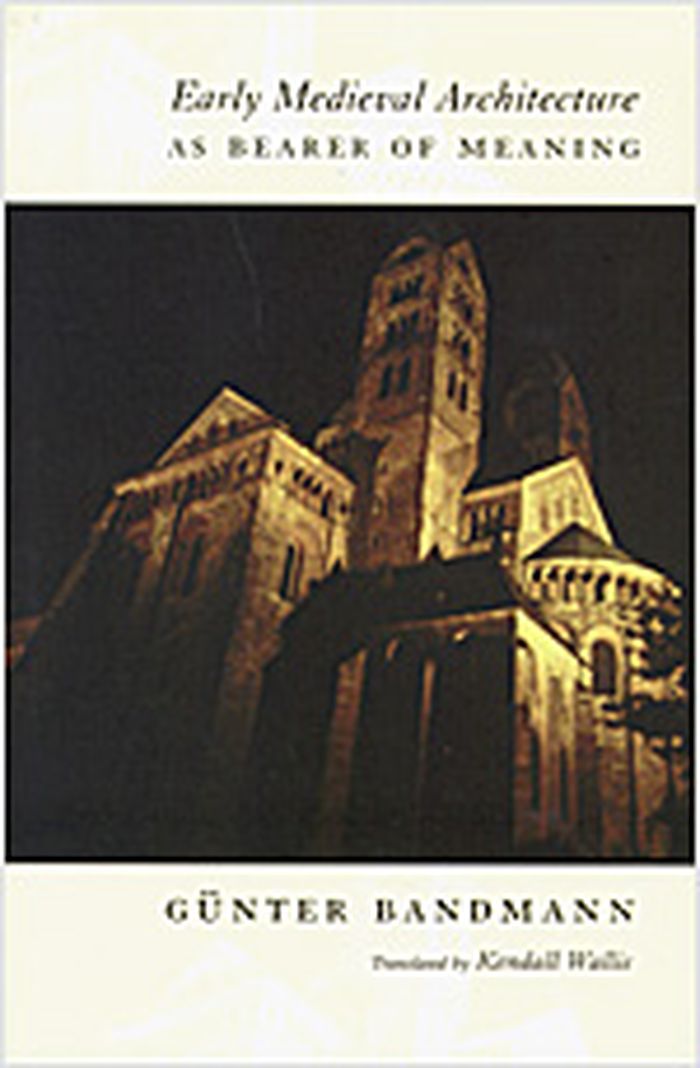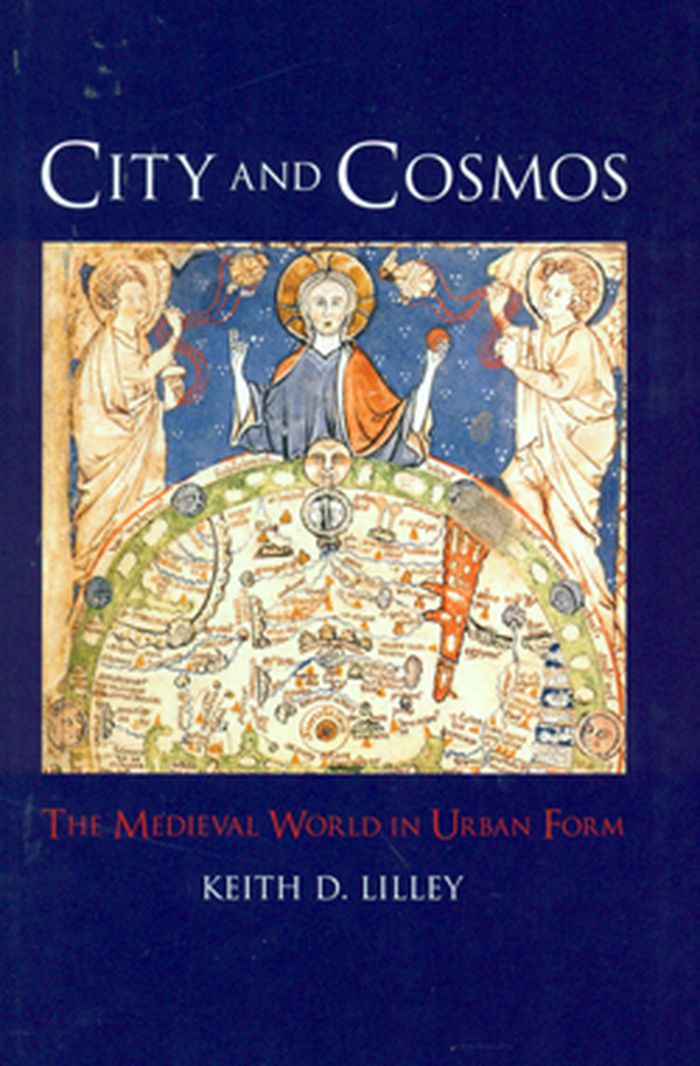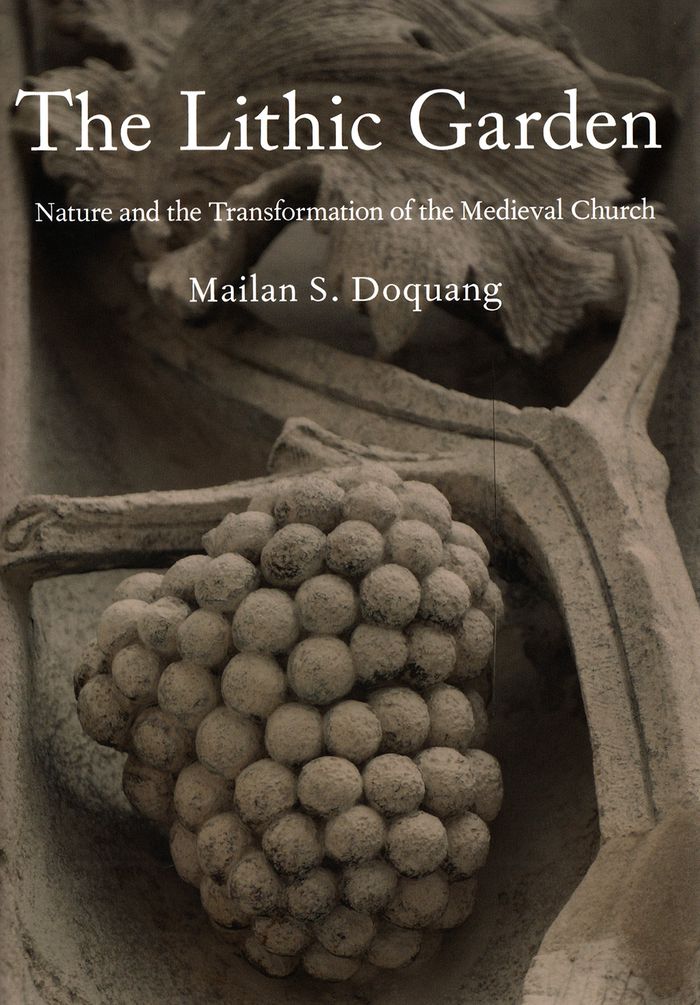$60.95
(available to order)
Summary:
L’ouvrage a pour fil conducteur les rapports complexes entre les architectures et décors fictifs et les notions d’illusion, de fiction et de réalité de l’Antiquité au Moyen Âge. Il s’intéresse aussi à la réception ultérieure des architectures et décors fictifs antiques et médiévaux. La première partie, « « La ville et ses monuments : fiction et mémoire », est centrée sur(...)
History until 1900, Middle Ages
April 2022
Architectures et décors fictifs antiques et médiévaux
Actions:
Price:
$60.95
(available to order)
Summary:
L’ouvrage a pour fil conducteur les rapports complexes entre les architectures et décors fictifs et les notions d’illusion, de fiction et de réalité de l’Antiquité au Moyen Âge. Il s’intéresse aussi à la réception ultérieure des architectures et décors fictifs antiques et médiévaux. La première partie, « « La ville et ses monuments : fiction et mémoire », est centrée sur l’image de la ville entre modèle idéal vitruvien ou modèle mythique virgilien et imaginaire de l’espace urbain. La deuxième partie, « Architecture et décor : poétiques de la description », permet de voir qu’à travers la pratique, artistique ou littéraire, des architectures et des décors fictifs, il y a toute une poétique des rapports entre espace réel et espace fictif, entre mémoire et création. La troisième, « La représentation architecturale : entre espace fictif et espace allégorique », a pour sujet la notion d’espace symbolique, du « temple » allégorique vitruvien de l’architecture aux allégories du temple de l’âme et à la Jérusalem céleste, et de l’Antiquité à l’époque romantique.
History until 1900, Middle Ages
$81.50
(available to order)
Summary:
This book is the first devoted to the important innovations in architecture that took place in western Europe between the death of emperor Justinian in A.D. 565 and the tenth century. During this period of transition from Late Antiquity to the Middle Ages, the Early Christian basilica was transformed in both form and function. Charles B. McClendon draws on rich(...)
History until 1900, Middle Ages
January 2005, New Haven
The origins of medieval architecture : building in Europe, A.D. 600-900
Actions:
Price:
$81.50
(available to order)
Summary:
This book is the first devoted to the important innovations in architecture that took place in western Europe between the death of emperor Justinian in A.D. 565 and the tenth century. During this period of transition from Late Antiquity to the Middle Ages, the Early Christian basilica was transformed in both form and function. Charles B. McClendon draws on rich documentary evidence and archaeological data to show that the buildings of these three centuries, studied in isolation but rarely together, set substantial precedents for the future of medieval architecture. He looks at buildings of the so-called Dark Ages—monuments that reflected a new assimilation of seemingly antithetical “barbarian” and “classical” attitudes toward architecture and its decoration—and at the grand and innovative architecture of the Carolingian Empire. The great Romanesque and Gothic churches of subsequent centuries owe far more to the architectural achievements of the Early Middle Ages than has generally been recognized, the author argues.
History until 1900, Middle Ages
$27.00
(available to order)
Summary:
The diamond vaults of Central Europe are among the most original yet little-known creations of medieval architecture : ceilings so complex that, as their name suggests, they recall the facets of a cut gemstone. First appearing in 1471 at the palace of Albrechtsburg in Meissen, Germany, they were employed for almost a century in locations as far apart as Gdansk on the(...)
Diamond vaults : innovation and geometry in medieval architecture
Actions:
Price:
$27.00
(available to order)
Summary:
The diamond vaults of Central Europe are among the most original yet little-known creations of medieval architecture : ceilings so complex that, as their name suggests, they recall the facets of a cut gemstone. First appearing in 1471 at the palace of Albrechtsburg in Meissen, Germany, they were employed for almost a century in locations as far apart as Gdansk on the Baltic to Bechyne in southern Bohemia (today’s Czech Republic). From a historical point of view, diamond vaults show the continuing vitality of Gothic architecture in Central Europe, at a time when the rediscovery of the classical past in Renaissance Italy was changing the course of building. Architecturally, they offer some of the most impressive examples of geometrical experimentation and versatility in both secular and sacred spaces. But perhaps their greatest appeal is visual. The stark, concave–convex shapes of diamond vaults, with their lyrical play of the effects of light and shade, strike us today as incredibly modern. "Diamond vaults" explores this singular phenomenon. A text by Zoë Opacic explores the vault’s origins, topography, structure and design, as well as function and context, focusing primarily on the Czech Republic, which boasts some of the best examples, and contrasting them with those in Germany and Gdansk. One of the chief aims is to demonstrate the undoubted aesthetic appeal of this form, which has continued to inspire generations of architects.
History until 1900, Middle Ages
$68.95
(available to order)
Summary:
At last available in English, this classic text was originally published in Germany in 1951 and has been continuously in print since then. Gunter Bandmann analyzes the architecture of societies in western Europe up to the twelfth century that aspired to be the heirs to the Roman empire. He examines the occurrence and recurrence of basic forms not as stylistic evolutions(...)
History until 1900, Middle Ages
January 2005, New York
Early medieval architecture as bearer of meaning
Actions:
Price:
$68.95
(available to order)
Summary:
At last available in English, this classic text was originally published in Germany in 1951 and has been continuously in print since then. Gunter Bandmann analyzes the architecture of societies in western Europe up to the twelfth century that aspired to be the heirs to the Roman empire. He examines the occurrence and recurrence of basic forms not as stylistic evolutions but as meaningful expressions of meta-material content and develops an architectural iconography of symbolic, historical, and aesthetic elements.
History until 1900, Middle Ages
$53.00
(available in store)
Summary:
One of the most famous books in the world, the ''Hypnerotomachia Poliphili,'' read by every Renaissance intellectual and referred to in studies of art and culture ever since, was first published in English by Thames & Hudson in 1999. It is a strange, pagan, pedantic, erotic, allegorical, mythological romance relating in highly stylized Italian the quest of Poliphilo for(...)
Hypnerotomachia poliphili : the strife of love in a dream
Actions:
Price:
$53.00
(available in store)
Summary:
One of the most famous books in the world, the ''Hypnerotomachia Poliphili,'' read by every Renaissance intellectual and referred to in studies of art and culture ever since, was first published in English by Thames & Hudson in 1999. It is a strange, pagan, pedantic, erotic, allegorical, mythological romance relating in highly stylized Italian the quest of Poliphilo for his beloved Polia. The author (presumed to be Francesco Colonna, a friar of dubious reputation) was obsessed by architecture, landscape, and costume- it is not going too far to say sexually obsessed- and its 174 woodcuts are a primary source for Renaissance ideas on both buildings and gardens. In 1592 an attempt was made to produce an English version but the translator gave up. The task has been triumphantly accomplished by Joscelyn Godwin, who succeeds in reproducing all its wayward charm and arcane learning in language accessible to the modern reader.
History until 1900, Middle Ages
Medieval architecture
$31.95
(available to order)
Summary:
Medieval architecture comprises more than the traditional image of Gothic cathedrals and the castles of chivaltry. A great variety of buildings - synagogues, halls, and barns - testifies to the diverse communities and interests in western Europe in the centuries between 1150 and 1550. This book looks at their architecture from an entirely fresh perspective. It shifts(...)
History until 1900, Middle Ages
June 2002, Oxford / New York
Medieval architecture
Actions:
Price:
$31.95
(available to order)
Summary:
Medieval architecture comprises more than the traditional image of Gothic cathedrals and the castles of chivaltry. A great variety of buildings - synagogues, halls, and barns - testifies to the diverse communities and interests in western Europe in the centuries between 1150 and 1550. This book looks at their architecture from an entirely fresh perspective. It shifts the emphasis away from such areas as France towards the creativity of other regions, including central Europe and Spain. It treats the subject thematically, seeking what all buildings, both religious and secular, have in common, and how they reflect the material and spiritual concerns of the people who built and used them. It considers how and why, after four centuries of shaping the landscape and urban patterns of Europe, medieval styles were supereded by classicism.
History until 1900, Middle Ages
books
$19.95
(available to order)
Summary:
Complété par plus de 130 illustrations, cet ouvrage fait revivre l'histoire du catharisme, un mouvement religieux du Moyen Âge, depuis sa naissance au XIIe siècle jusqu'à son anéantissement par la coisade des Albigeois et les persécutions légitimées par l'Inquisition au XIVe siècle. La présentation des cathares couvre leurs pratiques et leurs convictions, le mythe de leur(...)
Les cathares secrets et histoire
Actions:
Price:
$19.95
(available to order)
Summary:
Complété par plus de 130 illustrations, cet ouvrage fait revivre l'histoire du catharisme, un mouvement religieux du Moyen Âge, depuis sa naissance au XIIe siècle jusqu'à son anéantissement par la coisade des Albigeois et les persécutions légitimées par l'Inquisition au XIVe siècle. La présentation des cathares couvre leurs pratiques et leurs convictions, le mythe de leur trésor légendaire et leurs liens avec l'ordre des Templiers.
books
April 2009, Köln
History until 1900, Middle Ages
$55.00
(available to order)
Summary:
Keith D. Lilley argues that the medieval mind considered the city truly a microcosm: much more than a collection of houses, a city also represented a scaled-down version of the very order and organization of the cosmos. Drawing upon a wide variety of sources, including original accounts, visual art, science, literature, and architectural history, City and Cosmos offers an(...)
City & cosmos : the medieval world in urban form
Actions:
Price:
$55.00
(available to order)
Summary:
Keith D. Lilley argues that the medieval mind considered the city truly a microcosm: much more than a collection of houses, a city also represented a scaled-down version of the very order and organization of the cosmos. Drawing upon a wide variety of sources, including original accounts, visual art, science, literature, and architectural history, City and Cosmos offers an innovative interpretation of how medieval Christians infused their urban surroundings with meaning.
History until 1900, Middle Ages
$41.95
(available to order)
Summary:
In order to analyze the phenomenon of late Gothic “Cell Vaults“, it is essential to understand the building process, the characteristics of the specifications formulated in planning, and the design criteria for these structures. On one hand, the reasons for the invention of this particular type of vaulted ceiling in the late 15th century and its spread over a large area(...)
History until 1900, Middle Ages
November 2016
Traces of making: shape, design and construction of late Gothic vaults
Actions:
Price:
$41.95
(available to order)
Summary:
In order to analyze the phenomenon of late Gothic “Cell Vaults“, it is essential to understand the building process, the characteristics of the specifications formulated in planning, and the design criteria for these structures. On one hand, the reasons for the invention of this particular type of vaulted ceiling in the late 15th century and its spread over a large area are usually viewed from a technological standpoint. On the other hand, the appearance of these vaults, in particular the character of their curves and surfaces, can only be described against this background. As it happens, we have no recourse to contemporary information regarding the construction techniques or the design specifications of cell vaults. This constitutes a methodological problem: how is it possible, starting from the existing artifact, to formulate a clear idea of not only the production of the vaults but also the decision-making and communication processes associated with their making? Within the research project “Form, Construction and Design Principles of late Gothic Cell Vaults – ‘Reverse Engineering’ and Experimental Archaeology”, ways of thinking about the genesis of these particular vaults are formulated.
History until 1900, Middle Ages
$109.00
(available to order)
Summary:
This book offers new perspectives on the role of vegetal ornament in medieval church design. Focusing on an extensive series of foliate friezes articulating iconic French monuments, such as Cluny III, Amiens Cathedral, and Mont-Saint-Michel, it demonstrates that church builders strategically used organic motifs to integrate the interior and exterior of their structures,(...)
The lithic garden: Nature and the transformation of the medieval church
Actions:
Price:
$109.00
(available to order)
Summary:
This book offers new perspectives on the role of vegetal ornament in medieval church design. Focusing on an extensive series of foliate friezes articulating iconic French monuments, such as Cluny III, Amiens Cathedral, and Mont-Saint-Michel, it demonstrates that church builders strategically used organic motifs to integrate the interior and exterior of their structures, and to reinforce the connections and distinctions between the entirety of the sacred edifice and the profane world beyond its boundaries.
History until 1900, Middle Ages
